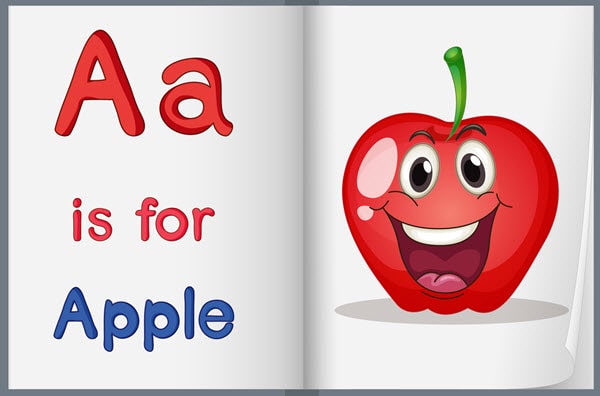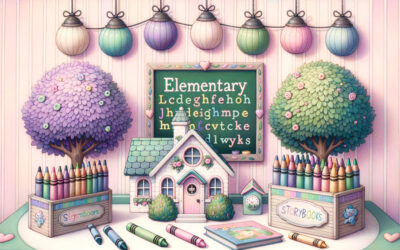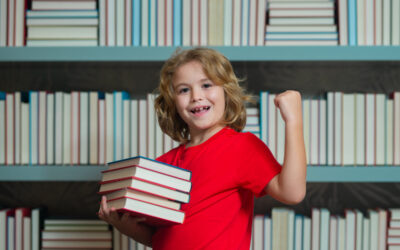Why phonics is important: Helping kids read and write better
Phonics is a letter-sound-based approach to teaching reading and writing. This means that the alphabet letters are used as building blocks for words, which can be matched with their corresponding sound.
The importance of phonics cannot be overstated, even in this digital age. In fact, many experts believe that it’s more important than ever before!
Read on to find out why…

Best Rated
See the Best Rated Reading Program
Take Quiz
Discover the ideal reading program for you & your child
Read this article
Continue reading the article
What is phonics?
Phonics teaches children to read by breaking down English words into letters and matching them with individual sounds. In phonics instruction, students are taught letter-sound relationships or the alphabetic principle. This means that they learn that each letter in the English language has one or more specific sounds associated with it.
For example, the letter “b” says /b/, the letter “p” says /p/, the letter “d” says /d/.
Once students have learned these sound-spelling relationships, they can then read and spell a new word by matching each speech sound to letters and steadily progress to reading multisyllabic words.
Why is phonics important?
Reading unfamiliar words
One of the most important reasons to learn phonics is that it helps children read unfamiliar words by themselves. To read fluently, students need to be able to decode words quickly and accurately. This is something that phonics instruction helps them achieve.
When children know how to sound out an unfamiliar word, they are less likely to get stuck on it while reading and more likely to continue with the text.
Decoding
Decoding words is one of the most critical skills an early reader can learn. It helps them map sounds onto spellings, thus enabling them to decode any new words they encounter. This means that it’s the cornerstone of reading development!
Fluency
Fluency is an important word reading skill that helps students understand what they read. It’s defined as the ability to recognize words accurately, automatically, and quickly while reading.
Fluent readers can focus on making meaning from text rather than sounding out each word individually. This makes it much easier for children to comprehend what they are reading.
Comprehension
Comprehension is the ultimate goal of reading.
When students can read fluently and decode words accurately, they can better understand what they are reading.
This is because their attention is not divided between decoding the text and understanding its meaning. In fact, reading research has shown that students who are more fluent tend to have higher comprehension levels than their less fluent peers.
Letter and word recognition
Another important reason to learn phonics is that it helps a student build letter and word recognition. This means that they can recognize words and letters when they see them, which in turn builds their vocabulary.
When children know the specific sound associated with each letter, it makes learning new words much easier!
Vocabulary
As mentioned earlier, learning phonics helps children learn new words. In fact, research has shown a direct correlation between vocabulary growth and phonics instruction.
The more phonics instruction students receive, the more they will read, and the larger their vocabulary will grow!
Reading foundation
Teaching children how to read using sound-spelling relationships gives them the tools they need to read almost every word they encounter. They can build on it and learn other reading strategies such as comprehension skills, word analysis, and vocabulary development.
This is why phonics instruction is so important – it lays the foundation for future reading success!
Types of phonics
Many types of phonics instruction help kids develop a stronger foundation for comprehension, spelling, and writing skills. These include:
Analytic phonics:
This is often called implicit or analytical phonics, and it’s a type of explicit instruction. With this approach, children are taught to read by looking at letter patterns and their sounds rather than focusing on the sounds alone. Furthermore, children can better understand how words are put together through word association and rhyme.
Synthetic phonics:
Synthetic phonics is often referred to as letter-sound instruction. This approach teaches children how each sound is associated with letter patterns. It does so by blending letter sounds together to form words. This type of phonics has been the most effective in teaching students letter recognition and sound relationships.
Embedded phonics:
Embedded phonics is different from other methods because it’s always embedded in literature, not in separate lessons. Embedded phonics approaches are less explicit than other approaches.
The goal of embedded phonics is to teach students unfamiliar words through analogy to known ones. This helps them build their vocabulary as they read and understand how each new word is formed.
Recommended Phonics Instruction
Systematic and explicit phonics instruction is recommended for students who struggle with reading. The more explicit the phonics instruction, the easier it will be for students to read and write later on in their education.
Systematic, Explicit Phonics Instruction
A systematic approach teaches every letter sound in a logical scope and sequence. Activities and lessons are developed with a clear objective and ongoing assessment. The level of reading instruction ranges from simple to complex. Lessons are always based on previously taught information.
The benefits of Systematic, Explicit Phonics Instruction
Reading comprehension improves significantly with systematic phonics instruction, particularly for children who have difficulty reading.
Reading problems can be prevented and overcome more easily with systematic phonics instruction than non-systematic or no phonics instruction.
We know the importance of teaching your kids to read using phonics. And more specifically, teaching them systematically and explicitly. Here are recommended phonics-based reading programs you can use at home to complement their school reading lessons.
Phonics Rule-Based Reading Programs
ABCmouse: Online reading program
ABCmouse’s early reading program covers everything from learning the names of each letter and the sounds they represent to eventually reading books. Starting with a few words on a page and progressively progressing to paragraphs.
Their reading program includes the following:
- Uppercase and lowercase letter recognition
- Teaching Phonics
- 450 books and beginning readers with rhyming words
- Structure of a sentence
- Speech components
- Punctuation and sentence structure
Children Learning Reading: Offline Reading Program
One of the most popular offline reading programs is Children Learning Reading. It uses systematic and explicit phonics reading instruction to teach your child to read fluently. This method works for children of all ages and was designed for parents to teach their children to read at home.
The benefits of this program include:
- improved comprehension and spelling
- prevention or overcoming reading problems more easily than other methods
- increased motivation for learning from enjoyment rather than fear of punishment
- grow in confidence when it comes time for reading out aloud
This phonics program includes:
- Phonemic and phonological awareness training
- Synthetic Phonics
- 32 Step-by-Step Phonics Lessons
- Lesson Videos
- MP3 Audios
- Phonics Sounds
- Sight words (high-frequency words)
- Phonics Lesson Activities
- Beautifully Illustrated Lesson Storybooks
- Fun and Engaging Phonics Games
Children Learning reading is our best rated kids reading program.
Conclusion
Teaching phonics is an essential early literacy skill that helps children learn to read. There are many phonics-based reading programs available, both online and offline. Systematic and explicit phonics instruction is the most effective way for students to learn how to read.
Choose a program that fits your child’s needs and enjoy watching them progress in their phonics knowledge and reading development!
FAQ
Why is language phonics important?
Phonics is a critical skill for reading. It teaches children how to decode letters into their individual sounds, allowing them to link the unfamiliar print words and spoken words.
This foundation is essential for reading. It enables children to understand and eventually read books, starting with a few words on a page and progressively progressing to paragraphs.
Without phonics instruction, children may struggle with comprehension and be more likely to experience reading problems. That’s why parents must teach their kids phonics at home in addition to what they learn in school.
What is the best method for teaching reading?
The best approach to teaching reading is instruction in specific parts of the reading process. Phonemic awareness, phonics, fluency, vocabulary, and comprehension are the major parts that need instruction. Reading instruction should be systematic, explicit, and specific to children’s needs.
What is the best order to teach phonics?
- Learning the alphabet and letter sounds
- Blending
- Digraphs
- Graphemes
- Reading fluency
Is teaching phonics the best way to teach reading?
Yes, research shows that systematic phonics is the most effective way to teach reading. Systematic phonics enables almost every child to become a confident and independent reader. Research also indicates that systematic phonics instruction positively affects reading comprehension and vocabulary development. Hence, phonics skills directly affect reading proficiency.
How many types of phonics are there?
There are four main types of phonics: synthetic, analytical, analogy, and embedded phonics.
When Should I Be Concerned About My Child’s Reading? When to Worry If Your Child Can’t Read
When Should I Be Concerned About My Child's Reading? When to Worry If Your Child Can't ReadReading...
Fun Unleashed: ABC Recognition Games That Kids Love
Fun Unleashed: ABC Recognition Games That Kids LoveUnderstanding the monumental role early...
Unlocking ABCs: The 5 Best Apps for Learning the Alphabet
Unlocking ABCs: The 5 Best Apps for Learning the AlphabetIn today's fast-paced digital world, the...
How to Help Students with Reading Comprehension: A Parent’s Guide to Success
How to Help Students with Reading Comprehension: A Parent's Guide to SuccessAs a guiding light for...
What is Skilled Reading: A Comprehensive Guide for Parents
What is Skilled Reading: A Comprehensive Guide for ParentsImagine a world where every child reads...
How to Learn the Phonetic Alphabet
How to Learn the Phonetic AlphabetAs parents, we all dream of the moment our child reads their...
Learning the Alphabet and Sounds: A Comprehensive Guide to Early Literacy Skills
Learning the Alphabet and Sounds: A Comprehensive Guide to Early Literacy SkillsDiving into the...
The Importance of Learning the Alphabet: Laying the Foundation for Reading Success
The Importance of Learning the Alphabet: Laying the Foundation for Reading SuccessWhen we think...
High Frequency Words vs Sight Words in Early Reading: Unlocking the Puzzle
High Frequency Words vs Sight Words in Early Reading: Unlocking the PuzzleAh, the tender journey...
Words for Kindergarten to Learn: Unlocking a World of Communication and Discovery
Words for Kindergarten to Learn: Unlocking a World of Communication and DiscoveryEmbarking on the...
How to Help Kindergarteners Learn Sight Words: A Journey of Discovery and Mastery
How to Help Kindergarteners Learn Sight Words: A Journey of Discovery and MasteryEmbarking on the...
Learning the Letters in Your Name: Unlocking the First Door to Literacy
Learning the Letters in Your Name: Unlocking the First Door to LiteracyOh, the delightful spark in...
Alphabet Letters in Order with Numbers for Your Little Learner
Alphabet Letters in Order with Numbers for Your Little LearnerEmbark on a delightful journey where...
Teaching ABCs to Preschoolers: Embarking on an Alphabet Adventure
A Guide to Teaching ABCs to Preschoolers: Embarking on an Alphabet AdventureEmbarking on the...
The Best Way to Teach Letter Recognition: Laying the Alphabetical Foundation
The Best Way to Teach Letter Recognition: Laying the Alphabetical FoundationEvery child's journey...
Phonemic Awareness vs Letter-Sound Correspondence: Unlocking The Mysteries of Early Literacy
Phonemic Awareness vs Letter-Sound Correspondence: Unlocking The Mysteries of Early Literacy...
How to Use Elkonin Sound Boxes for Phonics
What is Decoding in Phonics: Unlocking the Secrets of Early Literacy "Sound boxes for...
What is Decoding in Phonics: Unlocking the Secrets of Early Literacy
What is Decoding in Phonics: Unlocking the Secrets of Early Literacy Have you ever watched...
How to Teach the Difference between B and D: The Best Ways to Stop Letter Reversals
How to Teach the Difference between B and D: The Best Ways to Stop Letter Reversals Are you...
What Are Graphemes and Phonemes? The Difference Between Graphemes and Phonemes
What Are Graphemes and Phonemes? The Difference Between Graphemes and Phonemes ...

Natalie is a full-time blogger and former elementary school teacher who specializes in helping parents teach their kids to read. With a qualification in Early Childhood Education, over 7 years of experience in education, and a passion for literacy, Natalie provides practical tips, activities, and resources for parents looking to support their child’s learning-to-read journey. She is the proud mom of two young readers and loves sharing her knowledge and experience with other parents. Natalie enjoys spending time with her family, reading, and exploring the great outdoors when she’s not blogging.




































